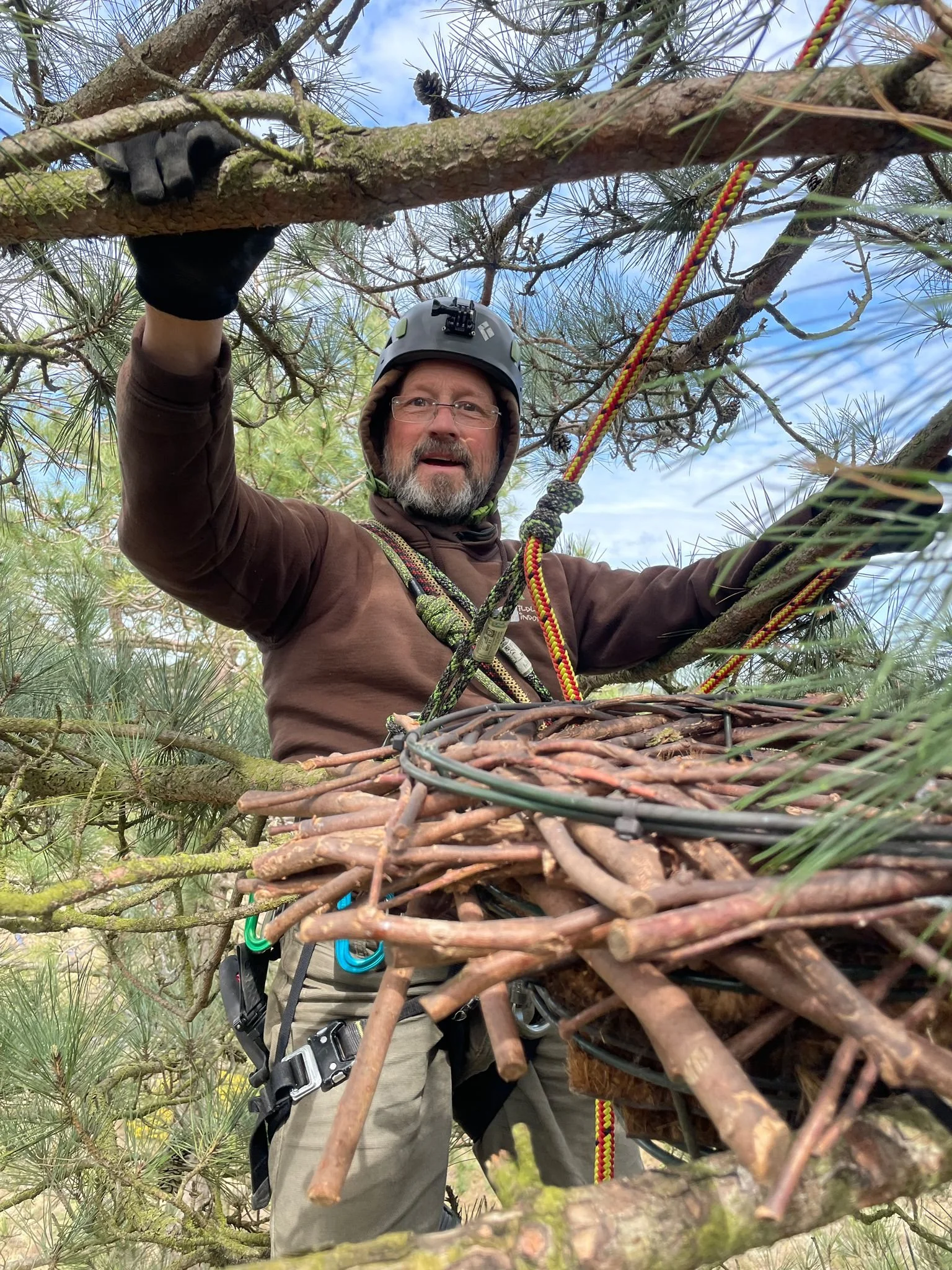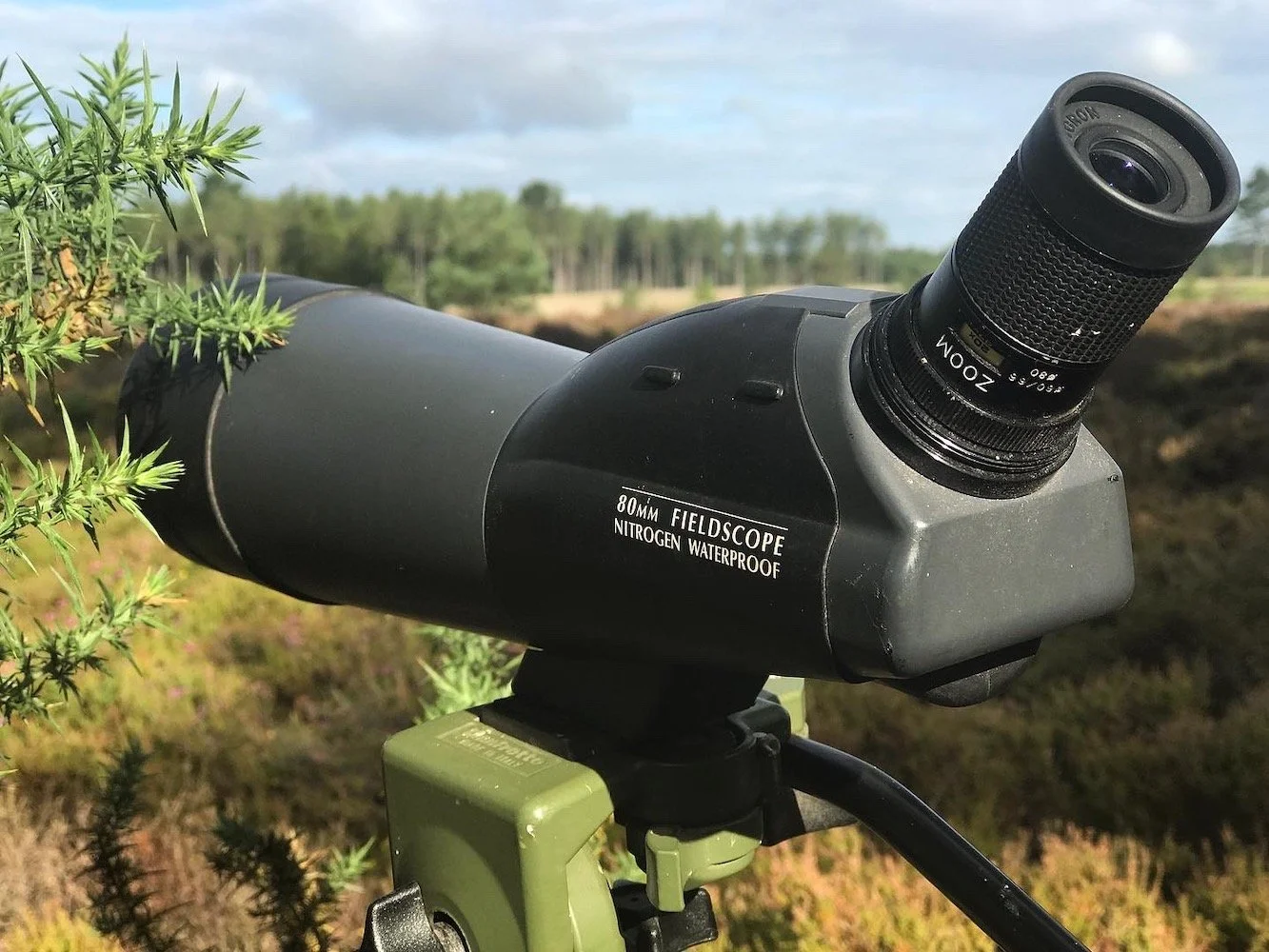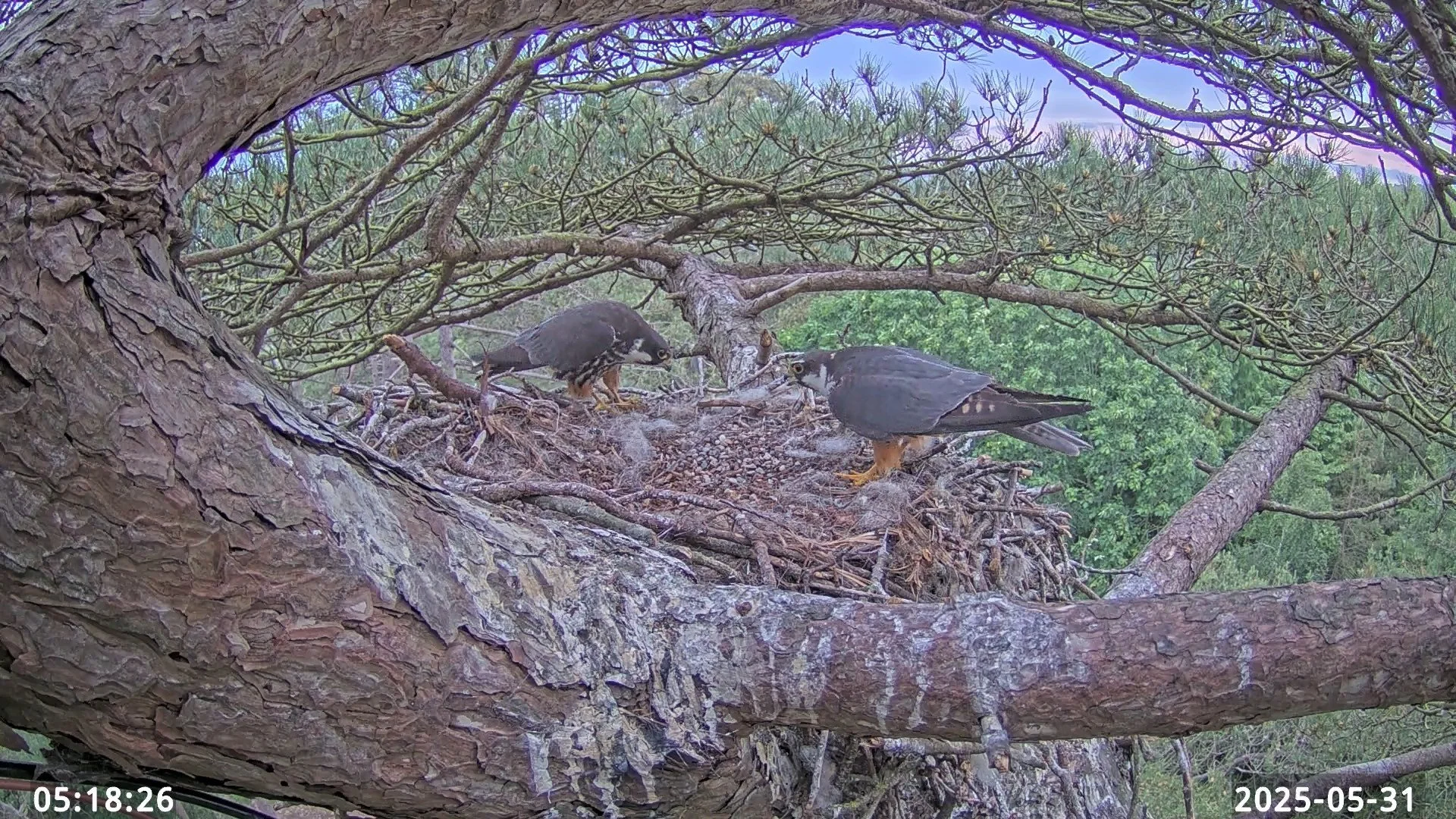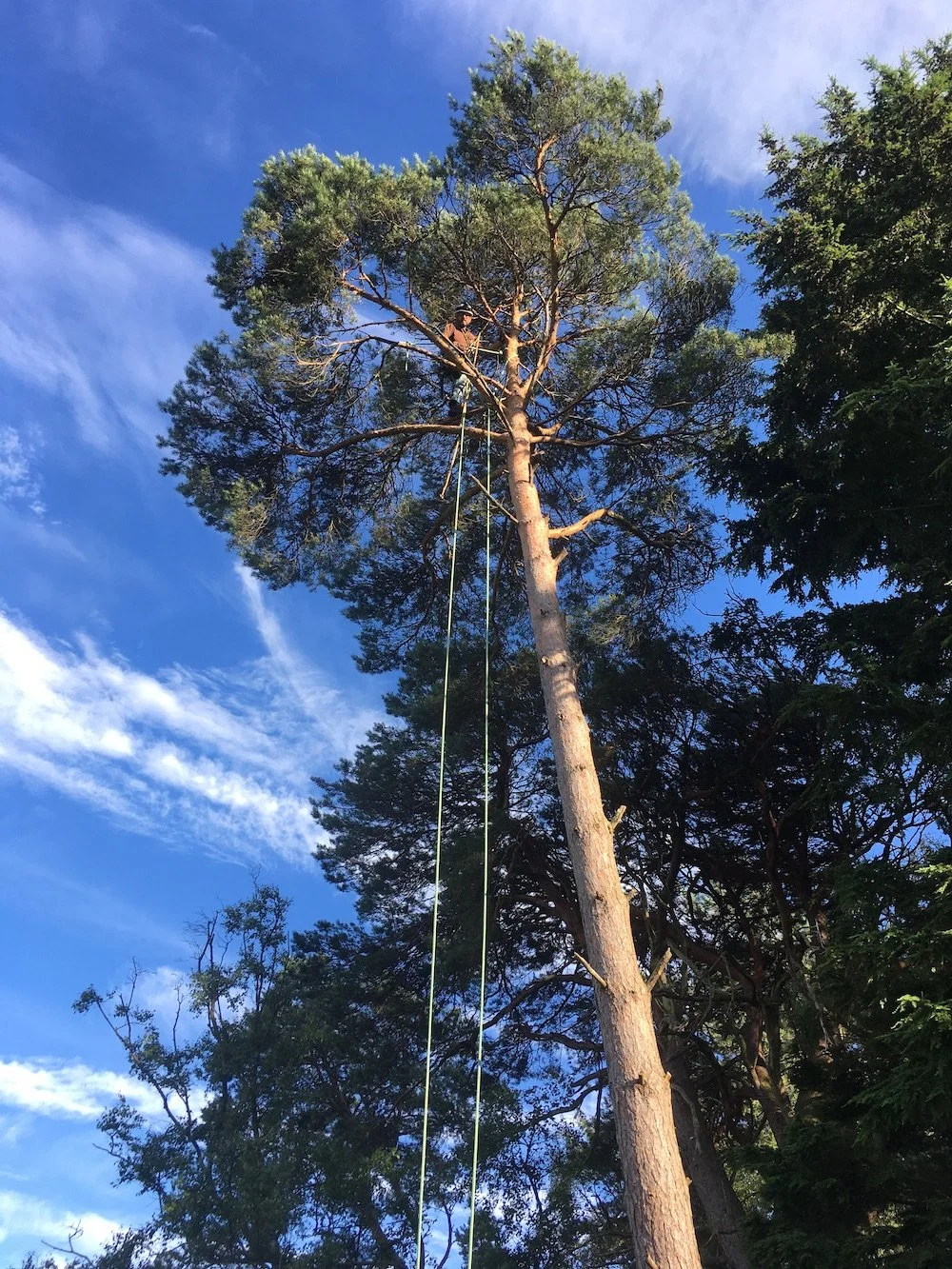A peek behind the scenes…
Read about our fascination for the Eurasian Hobby and our multi-year quest to live-stream a Hobby nest.
Meet Jason, our nest camera and all round tech expert
Wildlife nest cameras are an amazing way to watch some of our most captivating animals. Here in the UK there are live cameras on nests of species such as ospreys, eagle and more. DRSG's Jason is the installation and tech wizard behind many of these cameras. With nearly 20 years' experience installing cameras all over the UK with his company Wildlife Windows, who better to attempt the (almost) impossible - a live-stream of one of the UK's most secretive falcons, the Eurasian Hobby.
Our quest to live-stream a Hobby nest starts long before the birds arrive back to breed in the spring and begins with observations in the field. Extensive fieldwork the previous season includes monitoring pairs and locating and observing nest sites. This takes hundreds of hours in all weathers. As a sensitive species with special protection as a Schedule 1 species, all our work is carried out under licence. Once collated, all the information is fed back to Forestry England for assistance with their forestry operations and planning, and into the vast database of records held by the BTO.
Monitoring raptors in the field
Later, in the autumn, we meet to discuss field sites. Plans are drawn and a lot of thought is given to possible locations, logistics, technical equipment required, suitability of site for viewing (with particular thought given to lighting conditions) and of course the costs involved. Then, once we have decided on the locations, the work to install the camera equipment can begin.
The installation work itself happens in the winter season whilst hobbies are still far to the south, wintering below the Sahara in south central Africa. We approach each site with care and employ technical tree climbing and rope access skills to access a specific tree where we know the hobbies have bred the previous year.
It was in 2022 that we were first able to share a unique window into the private lives of this rare falcon. A pair of Hobby subsequently returned back to this nest in 2023 and 2024 and were streamed to the world for all to see.
Hobby nest in Dorset
The 2025 live Hobby nest cam is one of a number we put in place during the winter. Set within a forestry, heathland and bog environment we wanted to focus on this nest to show a different variety of prey items than other nests we have collected data from. This site has been used by successive generations of hobbies for at least 15 years. Working with wild animals is not always predictable and so additional cameras were installed across three other previously known nest sites. With the cameras and tech all in place, we crossed our fingers and waited for many long weeks for the first hobbies to return from their winter quarters.
Nest camera during the installation
Finally, the day had arrived. Hobby pairs were noted back to three of the four sites. At one, the pair showed interest in a used raven nest and seemed really keen but although they showed lots of interest, they went on to choose another location several hundred metres away. On the second site, a pair chose to nest within the same wood but at the far end from the camera nest. Who can tell why but maybe crows built a lovely new nest in an even better position in the wood and they opted for that! A third site remained empty and the pair were found 1km away.
Hobby pair displaying on nest
Our fourth and final hope was the main pair on Forestry England ground. Thankfully, this pair decided to settle down, choosing our artificial nest with a camera on it, hooray! This will be the third time a pair has bred in this same basket. Indeed, we have now been monitoring this site for 15 years and with this stand of trees occupied by Hobby nearly every year by successive generations of falcons. This goes to show how nest locations for hobbies are landscape-based and traditional.
Connecting to the camera from a safe distance on 13th June, 2 eggs were seen and it was assumed at that date this was a partial clutch since often Hobby lay more. On average, hobbies lay 3 eggs (85%) with 4 eggs less common (5%) and 2 eggs a bit more so (10%). However, connecting a couple of weeks later there were still only two eggs so this was indeed a full clutch. Perhaps the the pre-laying food supply is lower, what with all the strange weather we seem to have now, or maybe there is another factor at play?
Female Hobby with her eggs
You can see that this female carries a metal BTO ring. Given that we have been fitting colour rings for some years now, she could be 5 or more years old or, she could be from somewhere else. The only way we can tell is if at some point she kindly sits very close to the camera so we can read the ring, we'll keep you posted!
Our quest to live-stream a Hobby nest each year is a considerable challenge, one that is more than worth it when we see how much they are taken into the hearts of those watching. With viewers from around the world sending support, comments and thanks we heard in 2024 it was even shown in a primary school and a cafe within the local county. Here's to a fabulous 2025 and we're already making plans for next year. Happy watching!
Jason at at Hobby nest







